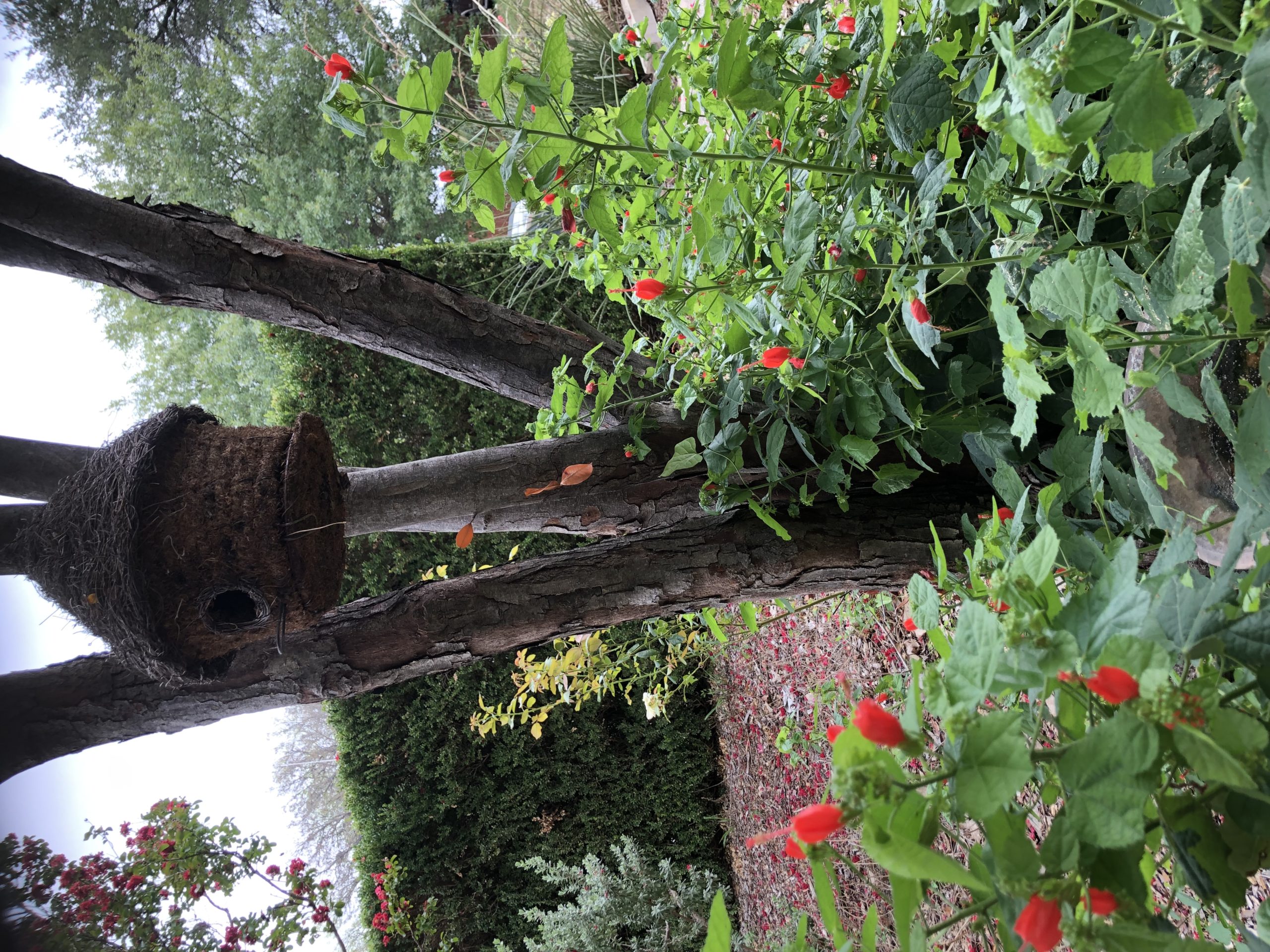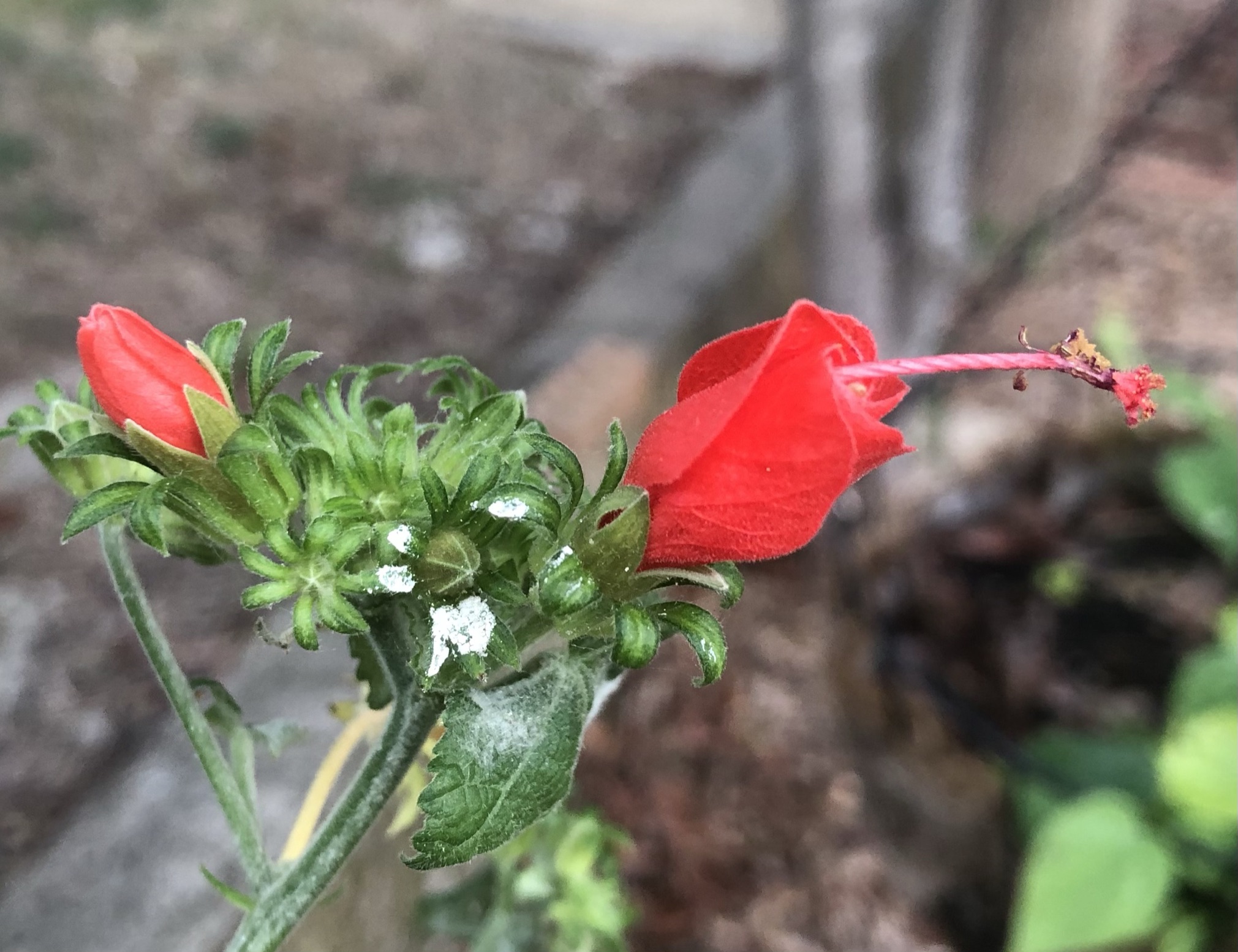 This North Texas native excels in our climate and should have a place in nearly every garden. This perennial can get over four feet tall and nearly three feet wide in the far north of it’s habitat. In warmer climates where it grows year-round it can tower over seven feet tall.
This North Texas native excels in our climate and should have a place in nearly every garden. This perennial can get over four feet tall and nearly three feet wide in the far north of it’s habitat. In warmer climates where it grows year-round it can tower over seven feet tall.
The Turk’s Cap can tolerate a wide variety of soil and water conditions and it has adapted to a wide range of climates with a range that extends from USDA zone 7 all the way south to Florida, Cuba, Mexico, and the entirety of the Gulf Coast. In southern climates that rarely get freezing weather the Turk’s Cap is an evergreen plant and will flower year-round. Further north it will die back to the ground in colder weather and reemerge every spring as a woody perennial. Malvaviscus arboreus is often found as an understory plant where it thrives in the shade of larger trees, but it’s adaptability allows it to flourish in everything from full sun to nearly full shade.
 When cultivating Turk’s Cap, it is generally recommended to prune it back in late winter or early spring to promote vigorous growth and maintain a compact shape. The plant can be propagated through stem cuttings or by dividing mature clumps. While propagation is easy in theory, the heavy black clays of North Texas make it exceedingly difficult to a very dense and extraordinary root system that can send taps very deep. Nevertheless, Turk’s Cap is very hardy and dividing root balls can be a very successful method of propagation. An alternative mentioned above is to use stem cuttings and a little bit of root powder, but the most successful methods are either layering (simply lightly bury a node on a branch) or letting it reseed from the abundant flowers and fruits they produce.
When cultivating Turk’s Cap, it is generally recommended to prune it back in late winter or early spring to promote vigorous growth and maintain a compact shape. The plant can be propagated through stem cuttings or by dividing mature clumps. While propagation is easy in theory, the heavy black clays of North Texas make it exceedingly difficult to a very dense and extraordinary root system that can send taps very deep. Nevertheless, Turk’s Cap is very hardy and dividing root balls can be a very successful method of propagation. An alternative mentioned above is to use stem cuttings and a little bit of root powder, but the most successful methods are either layering (simply lightly bury a node on a branch) or letting it reseed from the abundant flowers and fruits they produce.
 One of the most distinctive features of the Turk’s Cap is its unique flowers. Malvaviscus arboreus produces flowers from late spring to fall, attracting hummingbirds, butterflies, and bees with its nectar-rich blooms. The flowers have a long blooming season, providing a continuous source of nectar for pollinators. The flowers are borne in clusters and have a shape resembling a turban or a Turkish fez, which gives the plant its common name. The flowers are typically red, but there are also varieties with pink or white blooms. The true flowers are the small, inconspicuous structures within the colorful bracts. Malvaviscus arboreus is highly valued by wildlife due to its nectar-rich flowers. It attracts pollinators such as hummingbirds and butterflies, particularly ruby throated hummingbirds, making it a great addition to wildlife gardens. Birds are also known to feed on the red berries produced by the plant.
One of the most distinctive features of the Turk’s Cap is its unique flowers. Malvaviscus arboreus produces flowers from late spring to fall, attracting hummingbirds, butterflies, and bees with its nectar-rich blooms. The flowers have a long blooming season, providing a continuous source of nectar for pollinators. The flowers are borne in clusters and have a shape resembling a turban or a Turkish fez, which gives the plant its common name. The flowers are typically red, but there are also varieties with pink or white blooms. The true flowers are the small, inconspicuous structures within the colorful bracts. Malvaviscus arboreus is highly valued by wildlife due to its nectar-rich flowers. It attracts pollinators such as hummingbirds and butterflies, particularly ruby throated hummingbirds, making it a great addition to wildlife gardens. Birds are also known to feed on the red berries produced by the plant.
Besides its ornamental value, Turk’s Cap has some practical uses. The flowers can be used to make jams, jellies, and beverages with a tart flavor. The small red berries are also edible and have a mild flavor and mealy texture that makes them attractive to humans, birds, and animals alike. The leaves of the plant have also been used in traditional medicine in Mexico and elsewhere for various purposes, including the treatment of digestive, reproductive, and respiratory issues.
Need help with your irrigation or sprinkler system? Does your garden need an overhaul or just a general checkup? Give us a call at 877-558-1496, or drop us a line and contact us here, to find out how Desiree can help you create a wonderful garden with a budget you can afford.
Like what you’re reading? Get information like this delivered straight to your email inbox by signing up here. We will never sell your information, and you can unsubscribe at any time.
PLANT FACTS
- Plant Type: Woody Perennial Shrub
- Color: Evergreen with red or white flowers
- Light: Full shade to full sun
- Blooms: Red or White, Spring to Fall
- Height: 4 feet; up to 9 feet in frost free areas
- Width: 3 to 4 feet
- Heat Tolerance: Very High
- Water Requirements: Very Low
- USDA Hardiness Zone: 7-10
- Soil Requirements: Any




